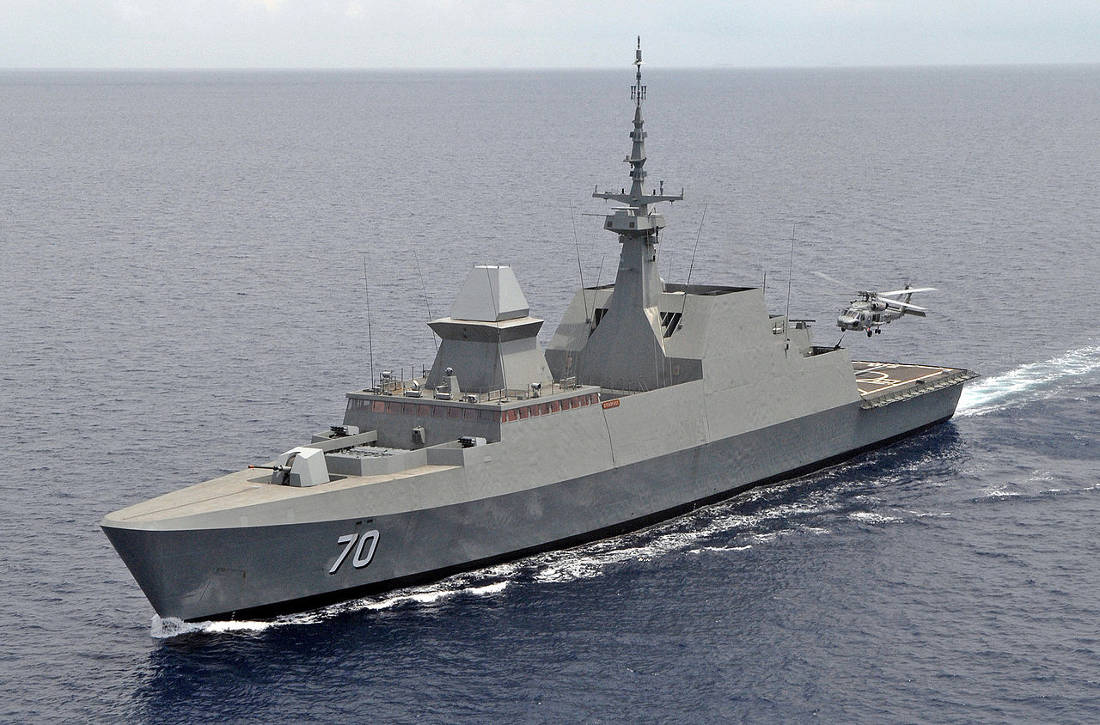Whenever one hears the word “Singapore”, the image that immediately surfaces on the person’s mind is a tiny and wealthy island city-state. To business leaders and, surprisingly, to many heads of state, it’s an important Asian financial hub. What never surfaces on one’s mind about Singapore, though, is that the tiny island has the best navy in Southeast Asia, alongside one of the best airforce and army.
What’s more, the Republic of Singapore Navy (RSN) is a highly sophisticated and well-trained maritime force, and currently on a spree to acquire more capabilities and next-generation platforms.
Reason behind building a stronger navy
Because of Singapore’s small size, the successive Singaporean governments have always been wary of the coercion they might face from Singapore’s bigger neighbors. In particular, Singapore has been suffering from turbulent relations with Malaysia, the country from which Singapore became independent in 1965. The turbulence with Malaysia has become worse in the late-2018 when Malaysia declared its intention to extend the boundary of its Johor Bahru port into the waters that Singapore deems its own and also revealed its intention to regain control of its airspace from Singapore, which has been controlling the air-traffic over the southern part of Malaysia’s Johor State since 1974.
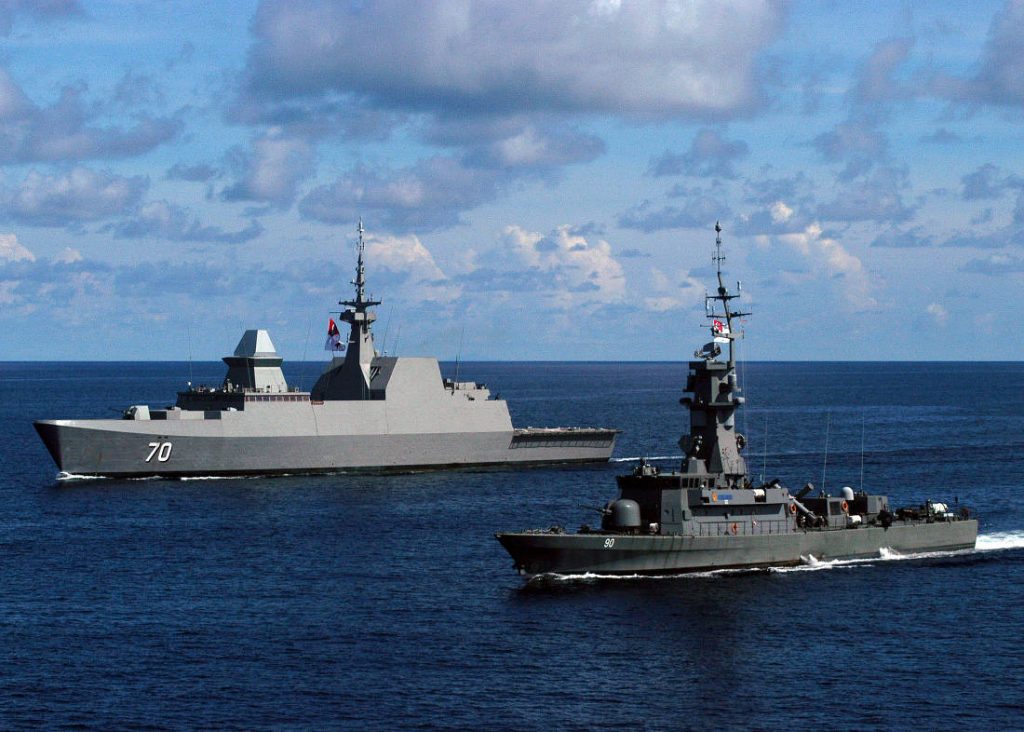
Given the facts that Singapore is located in the meeting point between Strait of Malacca and the South China Sea and is the gateway to the Indian Ocean, the latest concerning factors for Singapore’s defense and security is the expansion of China’s military influence in South China Sea and Indian Ocean, and the reaction of other regional countries to this expansion.
While China has been claiming almost all of the South China Sea, several Southeast Asian nations have also been claiming parts of the sea. China has already built an artificial island in the South China Sea and regularly patrolling on sea waters which are claimed by other nations. In such circumstances, a hostility between two, or among more, navies will not be surprising.
The aforesaid growing Chinese military influence and the potential for hostility in the South China Sea are worrisome developments for Singapore, which is heavily dependent on the peaceful movement of commercial vessels on the maritime passage in its surrounding waters.
The aforesaid factors are the catalyst for improving the Republic of Singapore Navy (RSN) into a stronger maritime force than it currently is. In this regard, Singapore has chosen to focus on quality rather than quantity.
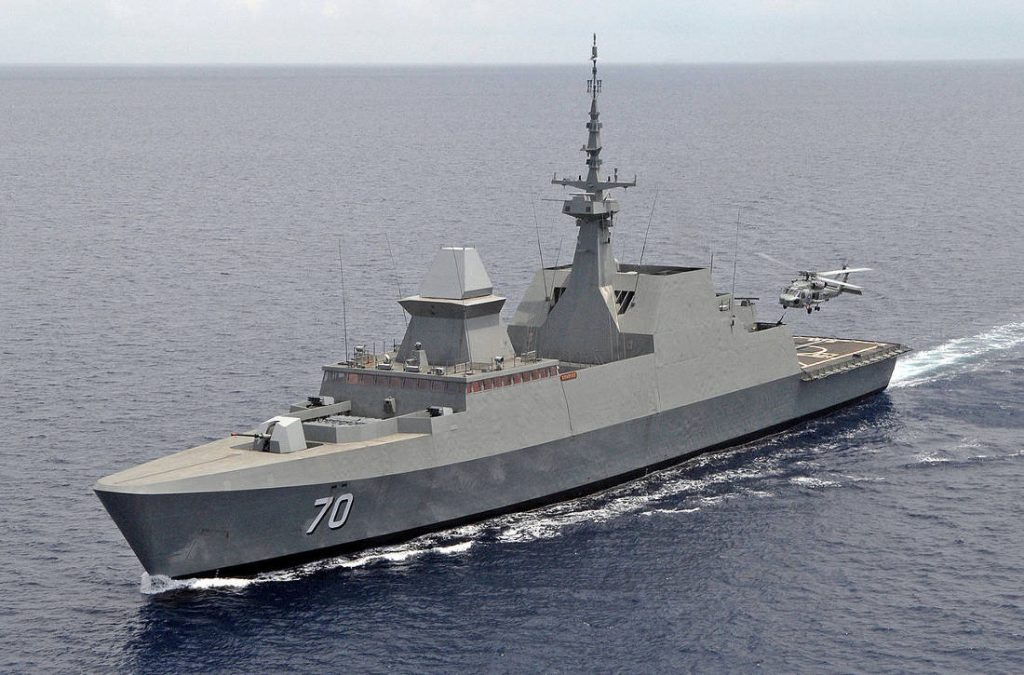
Because of the small size of its territory and the small population, Singapore could neither depend on the quantity of its defense hardware procurement nor its size of armed forces. It had to choose to develop the quality of its armed forces and armed procurement oversize and quantity. The RSN is doing so by recruiting less yet well-trained personnel and procuring less yet sophisticated vessels, equipment, weapons, and weapon systems.
Strengthening naval capabilities
Three major new naval procurement are mentioned in Singapore Ministry of Defense’s Committee of Supply Debate 2019 under the subheading “Building the Next Generation SAF”: Multi-Role Combat Vessels (MRCVs), Joint Multi-Mission Ships (JMMSs), and Invincible-class Submarines.
The new MRCVs, which are likely to be delivered over the period starting from 2025 to 2030, will replace the aging Victory-class Missile Corvettes. The JMMSs will be replacing the aging Endurance-class Landing Ship Tanks. The Invincible-Class Submarines will be replacing the existing and decaying ones.
Competition over aircraft carrier
Singapore is building large vessels that many experts believe to be ‘aircraft carriers in disguise’. The aforementioned JMMS — while thought to have conceived for humanitarian aid and disaster relief missions and is expected to carry five medium and two heavy helicopters on a flight deck — actually possesses the potential to be modified for fixed-wing aircraft and therefore serve as an aircraft carrier.
Since the competition among the navies of the overlapping regions of the Asia Pacific and Indo-Pacific is growing rapidly and there’s a particular tendency on the part of the regional navies for acquiring aircraft carriers or aircraft carriers in disguise, there’s a solid reason to believe that Singapore is building the aforesaid large vessels with the intention to modify these JMMSs into aircraft carriers whenever need arises.
While Chinese Navy, which is officially known as People’s Liberation Army Navy or PLAN, already have a Soviet-made aircraft carrier and has built its first domestically-made aircraft carrier, China is also expected to build four nuclear-powered aircraft carriers by 2035. The Indian Navy too has an aircraft carrier in service and another domestically-built aircraft carrier is ready to enter into service soon. Even the Republic of [South] Korea Navy’s large amphibious assault ships like the Dokdo-class are sometimes referred to as “aircraft carriers in disguise.”
With an eye on China, Japanese Navy (Japan Maritime Self-Defense Force) also intends to convert its largest ships, the JS Izumo and JS Kaga, so that the USA-made F-35B fighter jets can be launched from this vessel — something that effectively gives the vessels the same capabilities as aircraft carriers. Like Japan and South Korea, Royal Australian Navy too could convert one of its large vessels, the Canberra class Landing Helicopter Dock (LHD), to use it as an aircraft carrier.
As other regional navies are in a race to acquire aircraft carriers amid the growing geopolitical tensions in the regional waters, the ambition of using new JMMS vessels as aircraft carriers is nothing surprising on the part of the RSN, which too would be wanting to stay in pace with the regional navies race to acquire aircraft carriers.
New submarines in naval arsenal
As part of its submarine force renewal program, the RSN is acquiring four Type 218SG submarines from Germany to improve the operational and combat capabilities of its submarine fleet.
While one of these new submarines — the construction of which has been completed — will be delivered to Singapore by 2021, the other three under-construction ones are likely to be delivered over the period starting from 2022 to 2024. These new submarines are not sold to any other country, as these are particularly customized for Singapore, which has shallow and busy waters surrounding its coastlines.
These new submarines will be having far more capabilities and durability — and are built to stay submerged about 50% longer — than those of the existing ones. Because of the larger capacity, these submarines have plenty of scopes for future upgrades, meaning that these submarines could be equipped with weapon systems such as long-range missiles to carry-out an offensive strike.
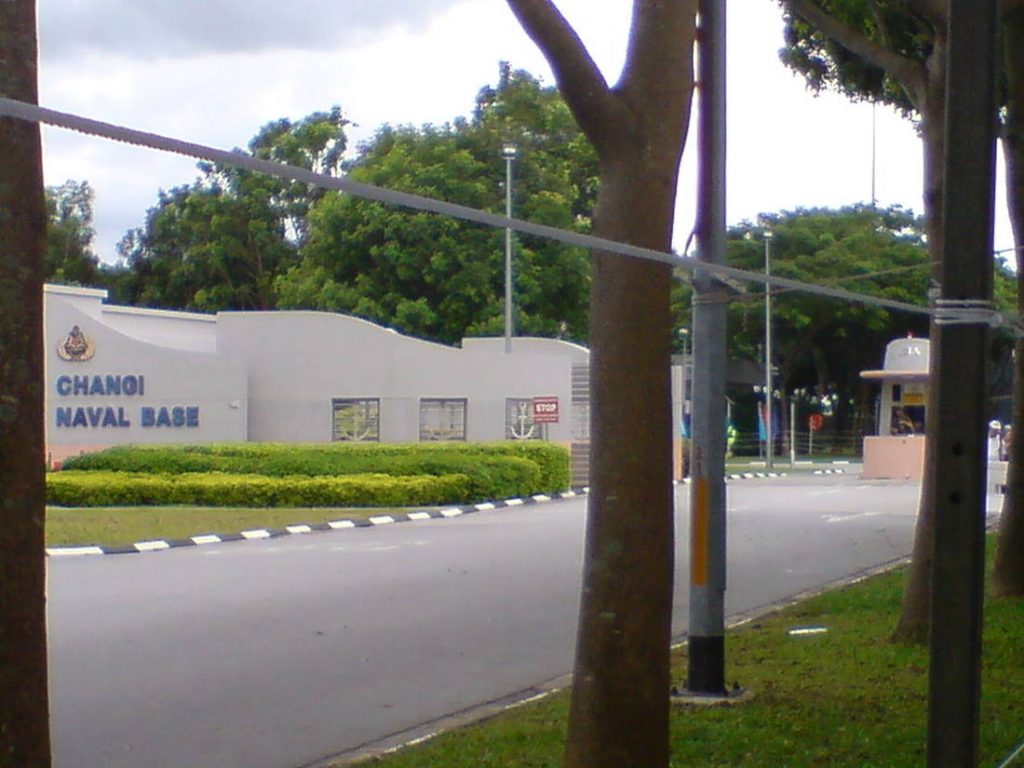
It’s worth mentioning here that submarines, unlike surface warships that have both peacetime and wartime functions, is built to shoot and destroy targets as well as to conduct surveillance, even surveilling foreign coasts to gather vital intelligence.
Singaporean Defense Minister Ng Eng Hen recently expressed his concerns about Singapore’s maritime security challenges and emphasized on the importance of deterrence to Singapore in a time when other countries in the region are increasing their spending in the defense sector, in particular modernizing their submarine fleets. It’s worth noting here that Australia, China, Indonesia, Thailand, and Vietnam are strengthening their armed forces, with a special focus on building up powerful navies.
Unmanned Platforms
The RSN is cautious of the limited human resources it has available for armed forces, including navy, because of the small size of its population. That is why the city-state has been focusing more on procuring those navy-vessels that could be operated with less personnel. Take the eight new Littoral Mission Vessels (LMVs) or the aforesaid new MRCVs for example. These vessels will need less crew for operational purposes.
The RSN is also very well aware of the fact that wars these days are fought from a distance with the help of unmanned weapons, unmanned surveillance vehicles, and unmanned armed vehicles — all of which work with an integrated platform that involves human involvements as well. In such modern-day warfare, it is important to spot the enemy before the enemy does so.
Keeping these factors in mind, the RSN is building vessels that will work in combination with additional unmanned drones and unmanned vessels that carry cameras and weapons to see farther and respond quicker.
That is why the aforesaid MRCVs and JMMSs will be having multiple unmanned air and surface vehicles to extend their reach and flexibility against threats. The aforesaid LMVs too will have a helicopter landing pad that will be able to carry an unmanned aerial vehicle (UAV) or a medium-sized helicopter.
Naval exercises
The RSN regularly takes part in various multilateral and bilateral naval exercises. The RSN is a regular participant to the USA Navy-hosted Rim of the Pacific Exercise (RIMPAC), the world’s largest multilateral maritime war-game held in even-numbered years in Hawaii. For a smaller navy like the RSN, participating in this exercise alongside powerful navies like the navies of USA, Japan, and South Korea helps RSN to improve the maritime operational understanding. The RSN also takes part in the USA-led Southeast Asia Cooperation and Training (SEACAT) maritime exercise, which first took place in 2002 and the latest exercise took place in August 2018.
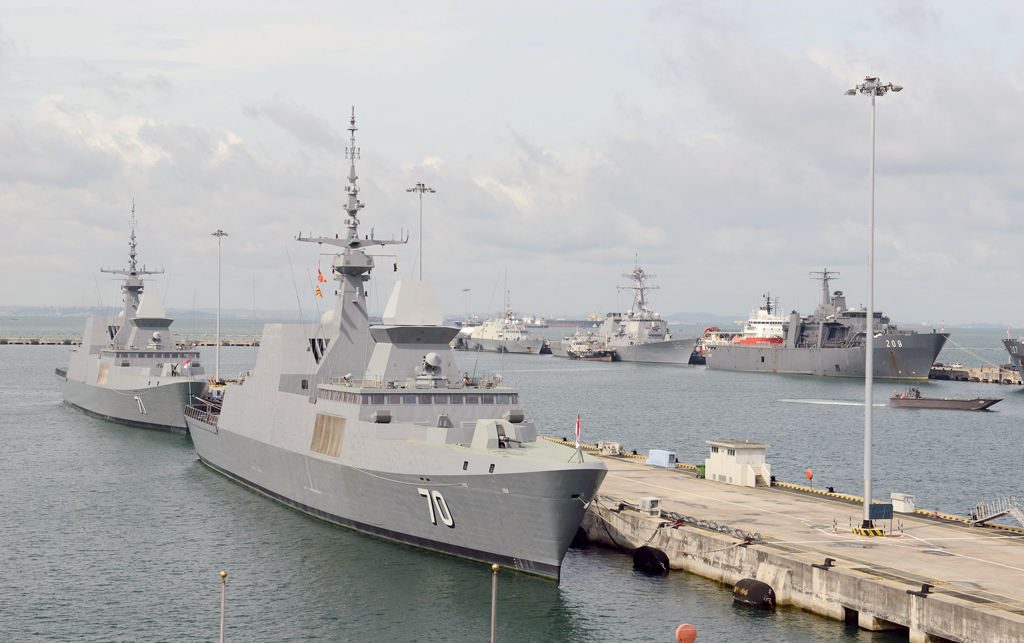
The RSN is a regular participant to the Indian Navy-hosted Milan, a multilateral naval exercise that has been taking place biennially in the Andaman and Nicobar Islands since 1995. Milan helps the RSN to improve its maritime operational understanding by conducting exercises in waters not distant from Singapore’s shores. Besides, the RSN gets to share operational knowledge of war-games with the bigger navies like Australia and India.
The RSN has also been taking part in the Maritime Security Field Training Exercise (MS FTX), which is conducted under the ambit of the ASEAN Defense Ministers’ Meeting (ADMM)-Plus. As the RSN gets the opportunity of performing the naval maneuvers with 18 other navies, including the powerful navies of USA, Japan, and India, this maritime exercise also sharpens the operational skills of the RSN personnel. It is worth noting that this year’s MS FTX was organized by Singapore along with South Korea.
Besides multilateral maritime war-games, the RSN participates in several bilateral naval exercises too, including Singapore India Maritime Bilateral Exercise (SIMBEX) held annually by the RSN and the Indian Navy. This year’s exercise, which was code-named SIMBEX 19, took place in the waters of the South China Sea, which is the subject matter of disputes among several Asia Pacific countries.
The RSN even held a maritime drill with the Chinese Navy (People’s Liberation Army Navy or PLAN) in 2015, though the Southeast Asian countries having strong security ties with the USA do not tend to engage in bilateral exercises with the PLAN. A second similar bilateral naval drill to be taken place in 2020 is on the cards.
The RSN also performs bilateral maritime exercises, namely Exercise Malapura, with Malaysia since 1984. The lastest Malapura naval maneuvers were performed on the waters of the very strategic Malacca Strait in late 2018. The exercise took place despite the aforesaid ongoing rift between the two neighbors regarding the extension of the boundary of Malaysia’s Johor Bahru port towards Singapore, and Malaysia’s intention to regain control of the southern part of Johor State’s airspace from Singapore.
Besides the aforementioned exercises, the RSN takes part in other multilateral and bilateral exercises too — something that enhances the capabilities and experiences of the RSN to face potential hostile scenarios in the regional waters.
Among top five asian navies
In an article on The National Interest, the RSN is ranked among the top five Asian navies, even when Indian Navy (IN), despite its heritage, history, aircraft carriers, and nuclear-armed submarine, couldn’t make its name into the list. According to the article, although the IN could beat the RSN due to the IN’s experience, more ships, more manpower and more money to buy or build replacements, the RSN is still a better navy than the IN in terms of quality, operation, and policy-making.
Arthur Waldron, an International Relations academic at the University of Pennsylvania, writes, “I know a bit about the excellent Singapore navy which controls the Philip Channel, the narrowest part of the Strait of Malacca (1.5 miles). Suppose China, necessarily dividing the fleet, sent a task force to subdue Singapore (278 square miles). I do not doubt that Singapore would sink the Chinese.”
Being wealthy helps the defense sector
Singapore is a tiny island city-state with a lot of wealth. The smaller size of its landmass allows Singapore to spend lesser wealth on infrastructures and other conventional sectors compared to the larger nations. Hence, Singapore is left with a lot of wealth to invest in innovation and technology as well as defense and security. The city-state’s vast wealth makes it possible to buy and produce quality defense equipment, weapons, weapon systems, vehicles, aircraft, and vessels.
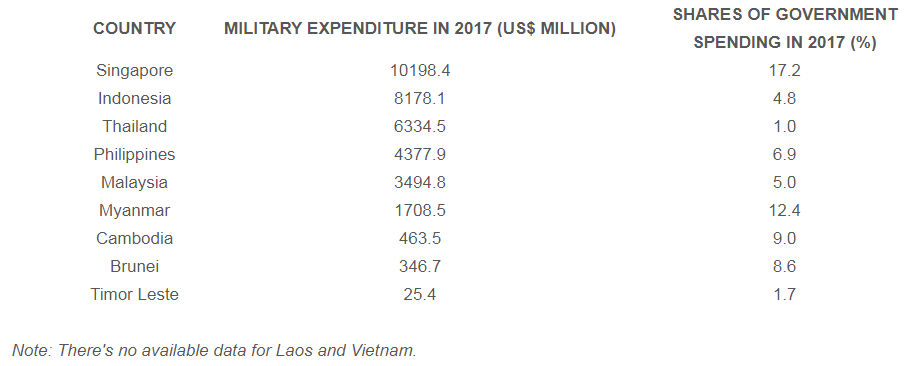
Singapore has been the ASEAN’s/Southeast-Asia’s largest military spender for several years now, keeping behind the major regional military powers like Indonesia, Vietnam, and Thailand in this regard. According to the Stockholm International Peace Research Institute (SIPRI) Military Expenditure Database, Singapore was the top Southeast Asian military spender in 2017 with an expenditure of US$10.2 billion and the Southeast Asian neighbor with the closest figures was Indonesia with an expenditure of US$8.2 billion. According to the SIPRI Fact Sheet titled ‘Trends in World Military Expenditure, 2018,’ Singapore was the top regional military spender in 2018 too with an expenditure of US$10.8 billion and again Indonesia spent the closest figures of US$7.4 billion.
It is worth noting that Singapore allocated US$11.4 billion for defense on its budget for 2019 — something which amounts to about 19 percent of total government expenditures and around 3.3 percent of national GDP.







